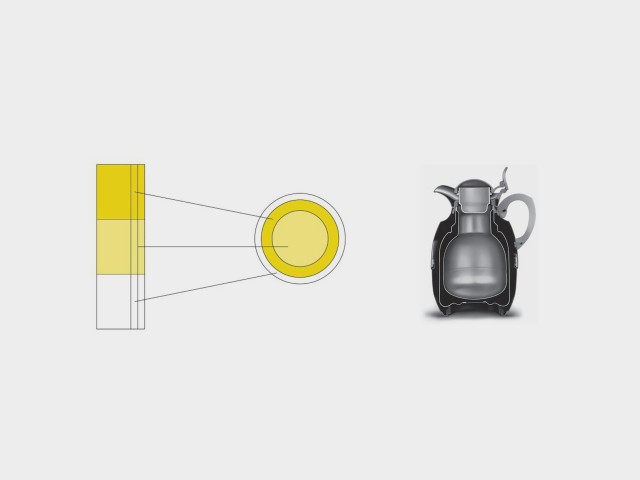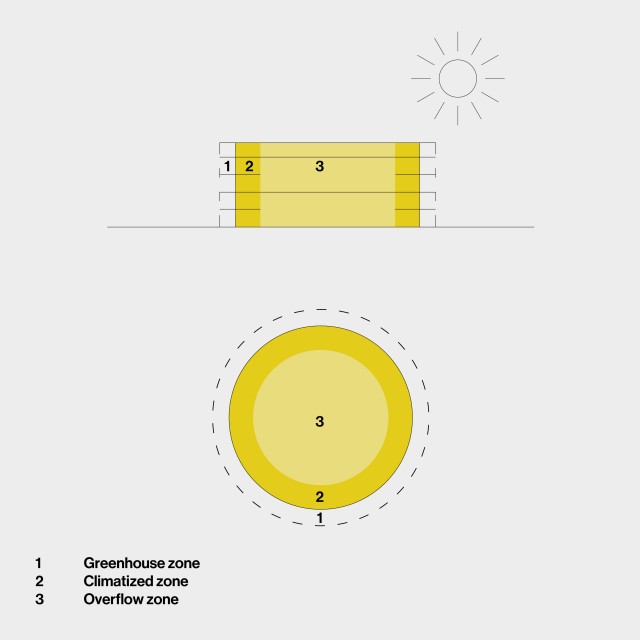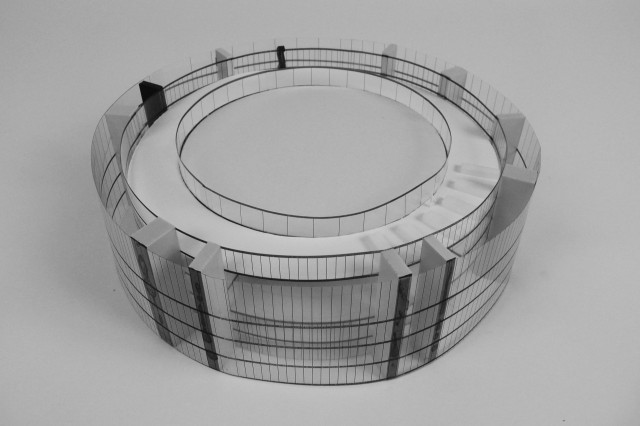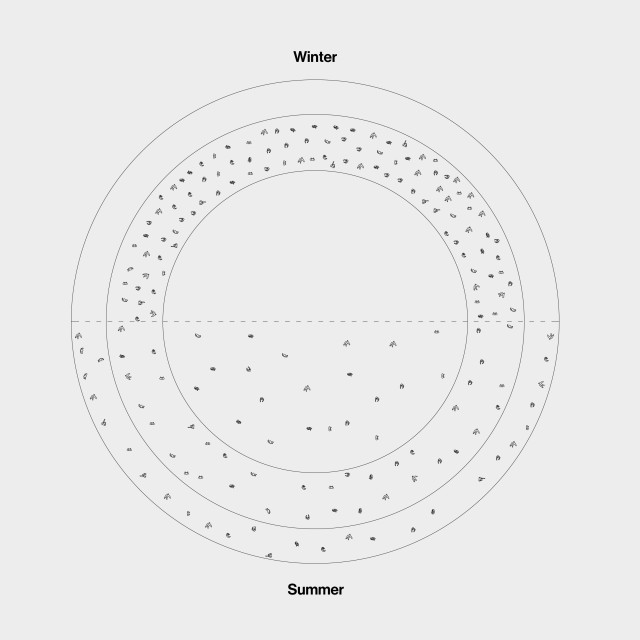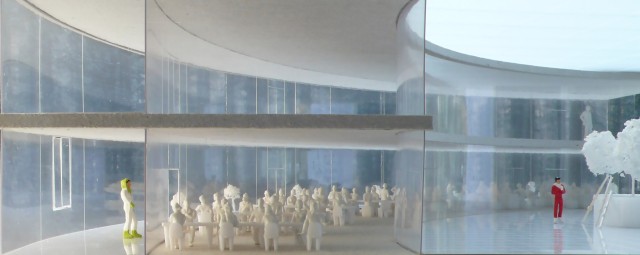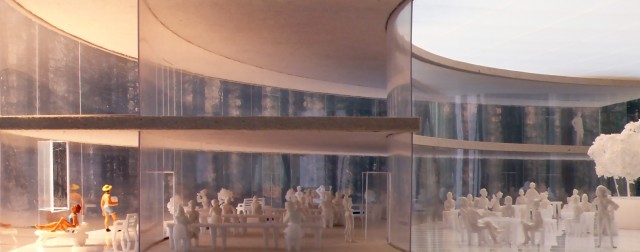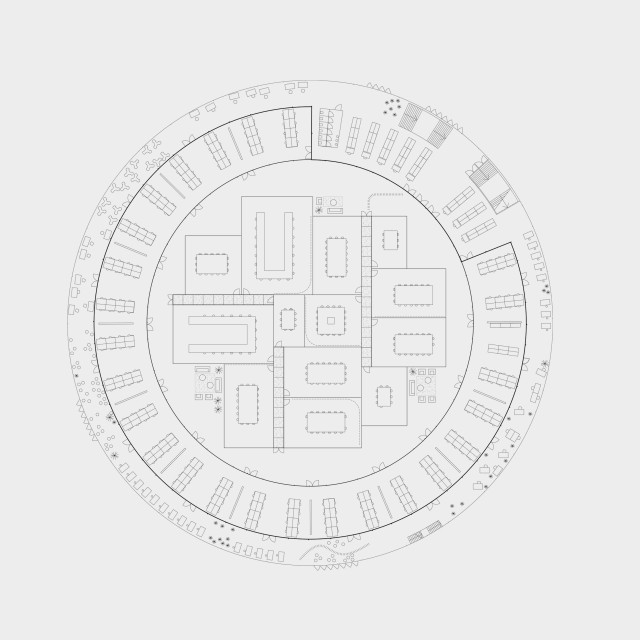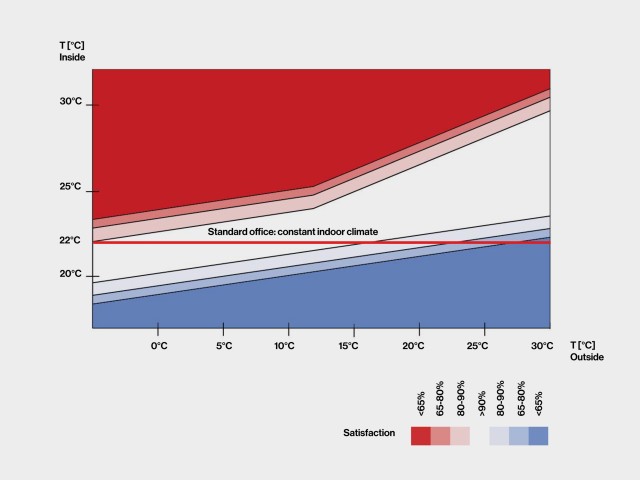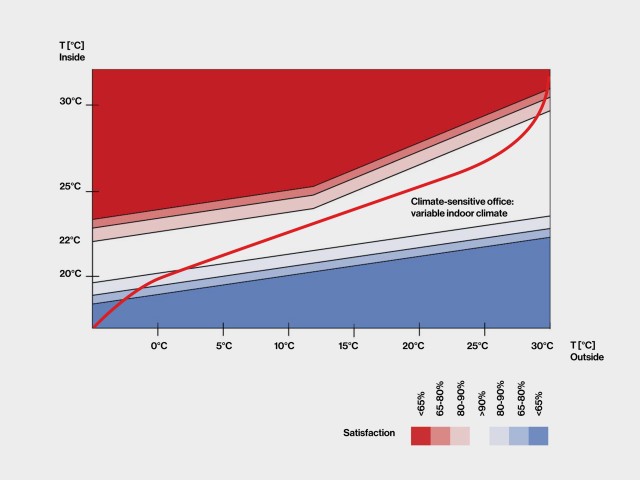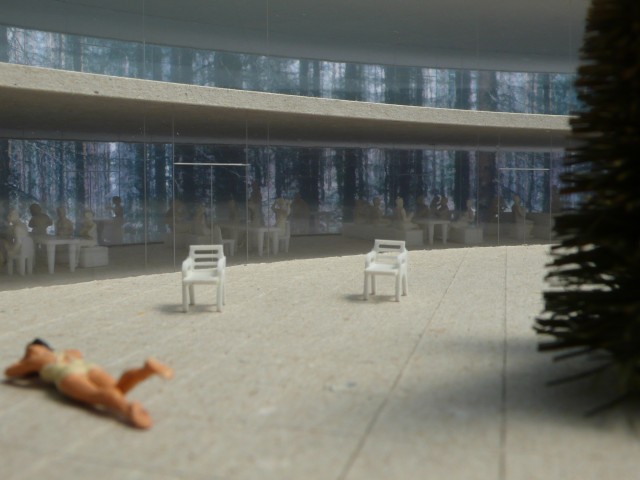Kantoor +
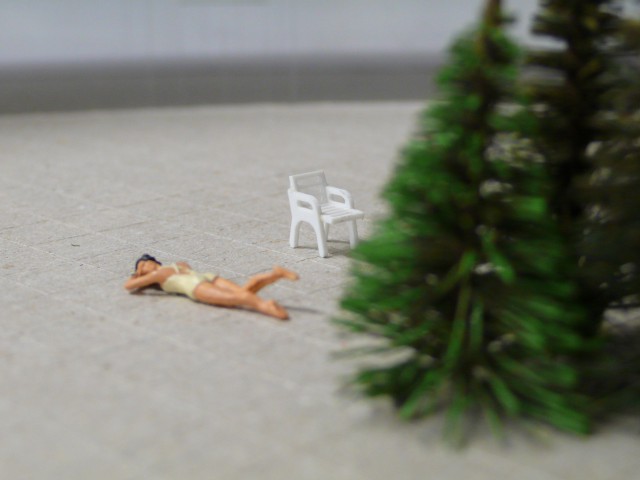
In March 2008 the Dutch Chief Architect’s Studio, headed by Chief Government Architect Mels Crouwels, commissioned a research project for a sustainable office building of 12,000 m². The aim was to research the way in which architectural expertise could be added in a research field which as yet remains mostly a question of innovative techniques and installations. The question was to test the project to a MIG index of 350, knowing that only a handful of realized projects today reach levels between 200 and 250.
The proposal starts by adding a select choice of progressive techniques on the level of water treatment, energy and material: free cooling and heating through a process of warmth-cold storage in the soil (without extra heat pumps), an underground labyrinth to pre-heat or cool ventilation air, a living machine for water treatment on the roof, daylight transportation through glass fibre cables, a structure consisting of an FSC wooden skeleton, etc. Adding up these measurements doesn’t bring us any closer to a 350 index. The remaining architectural intervention is meant to drastically rethink the typology of the ideal office building and the way it is used.
The main characteristic of this typology is the perfectly regulated indoor climate, aimed at a constant temperature of 22 °C. Research shows, though, that this is not always perceived as comfortable. Taking this observation as a starting point, this project examines what extent to which the climate in an office building can be linked to fluctuations in the outside temperature and in consequence require less energy input. The building is conceived as a complex of three different zones: (1) the ‘clima office’, which remains an actively climatized and controlled atmosphere; (2) the overflow zone, an internal isolated and non-climatized zone which profits from the transmission losses from the first; (3) the greenhouse, which wraps the building with a protective glass shell and benefits from the greenhouse effect.
Calculations show that the building as a whole can be used during 80 per cent of the year. The non-climatization of the overflow space makes it possible to create high-ceilinged landscape offices and grand (informal) meeting places. The greenhouse wrap works as a winter garden or a summer terrace, allowing the sun deep into the building while blocking the hot summer radiation from entering the building.
-
Location
Amsterdam, The Netherlands
-
Client
Atelier Rijksbouwmeester Nederland
-
51N4E team
Johan Anrys, Freek Persyn, Peter Swinnen, Tine Cooreman, Maddalena Treccani, Emmanuel Debroise, Andreas-Anton Amodio
-
51N4E involvement
design research
-
Structural engineer
Arup
-
Sustainability
Arup Amsterdam
-
Programme
offices
-
Built surface
12.000 m²
-
Construction costs
€ 27.900.000
-
Image credits
51N4E
